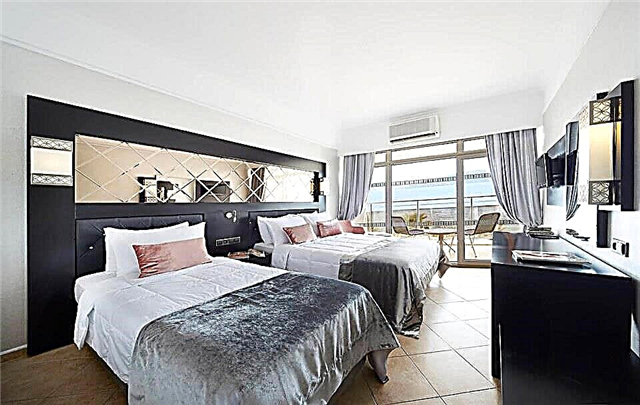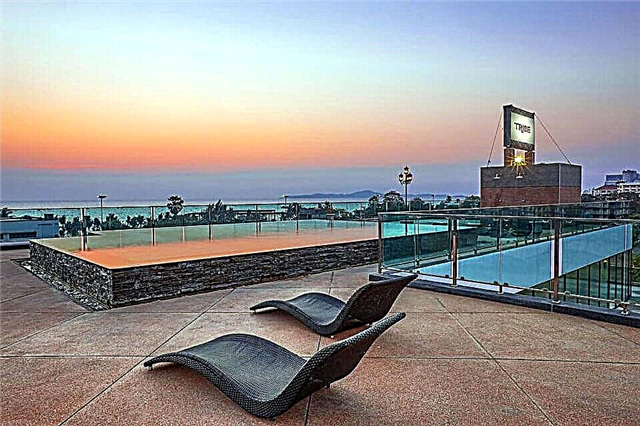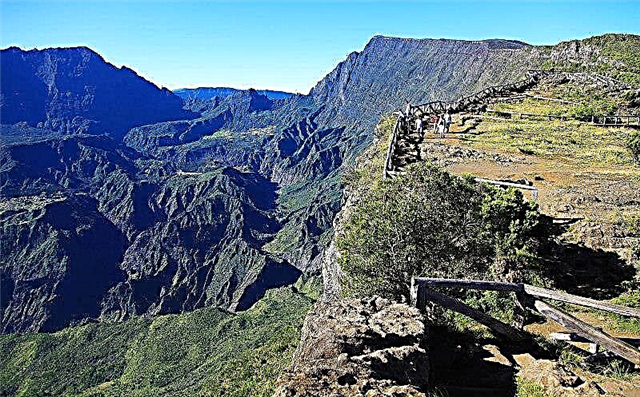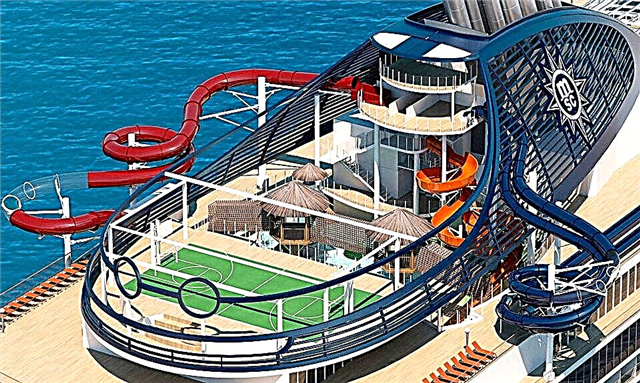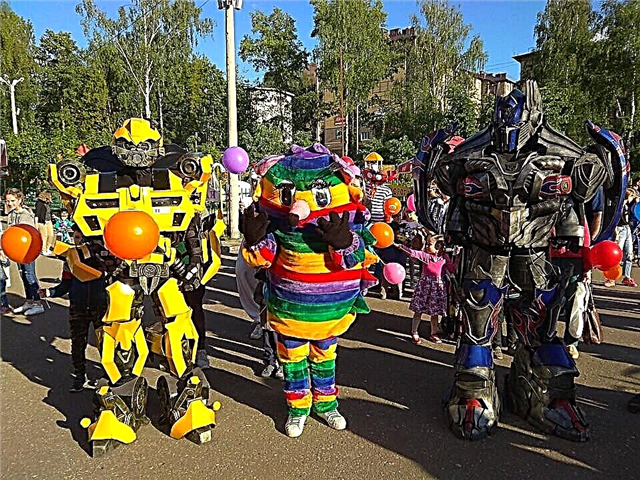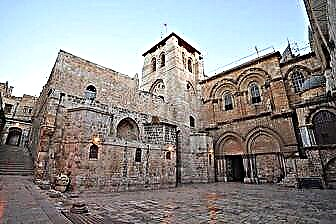Jerusalem, without exaggeration, can be called one of the most significant cities on our planet. It is located at the intersection of civilizations, cultures and religions. Jerusalem keeps memories of the great kings of the ancient kingdom of Israel, the rulers of the Roman and Byzantine empires, and the caliphs of the powerful Arab states. Jesus Christ and the Prophet Muhammad, the founders of future world religions, once roamed the streets of the Old City.
A huge number of pilgrims, as well as secular tourists, visit Jerusalem every year to touch the Western Wall, pray in the Church of the Holy Sepulcher and walk the road of Christ to Calvary. The historic heart of Jerusalem - the Old City is a UNESCO World Heritage Site. Here the traditions of Byzantine, Arabian and Jewish architecture are intertwined in a whimsical mosaic. The new districts of the city, which began to form much later, are of no less interest. A special place among them is occupied by Mea Shearim, where Orthodox Jews still prefer to settle.
* The list does not indicate the districts of the city, which in different sources can be seen as separate attractions: the Old City of Jerusalem, the Temple Mount, the Mount of Olives, the Jewish Quarter and others.

The best hotels and hotels at affordable prices.
from 500 rubles / day
What to see and where to go in Jerusalem?
The most interesting and beautiful places for walking. Photos and a short description.
Church of the Holy Sepulcher
According to the texts of the Holy Scriptures, the temple complex stands at the very place where Jesus was martyred, buried and resurrected. The first basilica appeared here in the 3rd-4th centuries. The magnificent building in the Romanesque style was erected by Europeans in the middle of the 12th century. after the successes of the first Crusades. Today the Church of the Holy Sepulcher is an architectural complex that includes Golgotha, several cathedrals, churches, monasteries, an underground cathedral and side-altars belonging to various branches of the Christian church.

Wall of Tears
Part of the ancient wall of the 6th century BC e. 485 meters long (only 60 meters on the surface), which survived after the destruction of the Second Jerusalem Temple in the 1st century. This place is one of the main Jewish shrines. Jews all over the world consider it their duty to make a pilgrimage to the Western Wall, touch it with their hand, write a wish on a piece of paper and leave it in one of the cracks. Not only Jews are allowed to the Wall - any tourist can do the same.

Western Wall Tunnel
An underground passage along which you can walk along the entire preserved part of the Western Wall. The tunnels were discovered during excavations in the 19th century. Today this attraction is located in the Muslim quarter. As a result of archaeological research, experts have discovered many ancient artifacts from different historical periods in the dungeons. The passage was opened to the public in the 1990s.

Yad Vashem
Memorial complex of 1953, dedicated to the events of the Holocaust. It commemorates the many victims of the persecution of the Jewish people during World War II. The complex includes several objects - the Hall of Memory, the Museum of the History of the Holocaust, the Partisan Panorama, the Column of Heroism, the Children's Memorial, individual monuments and squares. The International Institute for Holocaust Research operates in Yad Vashem.

Street "Via Dolorosa"
It is believed that the Via Dolorosa was the path of Jesus to the place of the crucifixion. On the street are marked 9 of the 14 supposed stops of Christ during his dying procession to Calvary. There are also several temples and a monastery. The name of the street translates as "mournful road". The total length of the route is 500 meters. It will take about an hour to walk through it, subject to a delay at each stop.

Jewish cemetery on the Mount of Olives
The oldest Jewish necropolis in the world, where there are tombs and burial niches with the remains of the Old Testament prophets Malachi, Zechariah and Haggai. The first burials date back to the 10th century BC. The cemetery is considered sacred. For many centuries, being buried within it was revered as a great honor. According to the Jewish faith, at the end of time, the Messiah will ascend the Mount of Olives and begin to raise the dead.

Garden grave
Jewish cave burial, which is revered by some followers of the Protestant church as the true tomb and place of the resurrection of Christ (the so-called Protestant Golgotha). However, research and a number of facts show that the ancient necropolis dates back to the 9th-7th centuries. BC The tomb is located in the Sheikh Jarah quarter near the Dominican monastery of Saint-Etienne.

Tomb of the virgin
One of the Christian shrines of Jerusalem. According to Scripture, Jesus' mother Mary is buried in the grave. The tomb is located on the western slope of the Mount of Olives in the territory of the Kidron Valley, mentioned many times in the Bible. All Christian churches have access to the shrine, but it itself belongs to the Jerusalem Orthodox Church. In the IV century, with the assistance of Helena Equal to the Apostles, the first temple was erected over the tomb.

Dome of the Rock Mosque
The temple was erected in 687-691. several decades after the death of the Prophet Muhammad. It is considered one of the first monuments of Islamic architecture. In those days, the concept of "mosque" did not exist yet; the building was built as a house for pilgrims. During the reign of the Crusaders over Jerusalem, Masjid Qubbat al-Sakhra (the Arabic name for the temple) was turned into a church, but in 1187 it again fell into the hands of Muslims.

Al-aqsa mosque
Temple of the beginning of the VIII century, which is considered the third shrine of Islam after two mosques in Mecca and Medina. After the destruction of the building by an earthquake in 1033, Caliph Ali al-Zikhir built another temple, which still stands today. The facade, walls and minarets of the mosque are made of limestone, the interior is decorated with marble mosaics. The building can simultaneously accommodate up to 5 thousand people.

Basilica of St. Anne
The basilica was erected on the site of the dwelling where the mother of Jesus Mary was born. The temple is located in the territory of the old quarters, which is now occupied by the Muslim region. St. Anne's Church was built during the reign of the Crusaders in the middle of the 12th century. In 1192, after their departure from Jerusalem, the building was converted into a madrasah. In this capacity, the basilica existed until the middle of the 19th century. In 1856 she was given to the Christian community.

Church of all nations
Franciscan temple within the Garden of Gethsemane where Jesus prayed the night before his arrest. The church was built in 1924 by the architect A. Barluzzi. The money for the construction was provided by representatives of the Catholic Church from 12 countries, thanks to which the temple received the name "Church of All Nations". The modern building was erected on the foundations of the 12th century, left over from the era of the knights-crusaders.

Monastery of the Assumption of the Mother of God
Benedictine monastery on Mount Zion, created at the beginning of the 20th century on the site where the house of John the Evangelist was supposedly located. The monastery was erected to replace the 12th century temple, which was destroyed by the Muslims after the victory over the crusaders. Even earlier, during the 5th-9th centuries. here was the early Christian basilica of St. Zion. The architecture of the main monastery church combines elements of the Arabian and Byzantine styles.

Chamber of the Last Supper
A room on the top floor of one of the city's houses on Mount Zion, where a meal of Christ and his disciples was held, known as the Last Supper. This room is considered to be the first Christian church.During the era of the Knights-Crusaders, the entire building was converted into a church, which was decorated with marble columns and domes. Some of the decor elements belong to an even later era. The tomb of King David is located on the first floor of the Upper Room.

St. Peter's Church in Gallicantou
Catholic church of the first half of the 20th century, erected on the supposed place of the abdication of the Apostle Peter. According to the beliefs that arose in the Middle Ages, here Peter mourned his unworthy deed. The church was built in the neo-Byzantine style according to the project of the architect E. Boubet. It was preceded by three temples, the last of which fell into disrepair and was destroyed at the end of the 13th century.

Our Father Church
The temple is located on the slope of the Mount of Olives in the place where Christ pronounced the prayer "Our Father" before the apostles. In fact, this is an unsubstantiated assumption. It is not known whether Jesus read this particular prayer to his disciples, as different sources contain conflicting information. The architectural complex, which includes a Carmelite monastery, was erected in the 19th-20th centuries. on the site of a 5th century basilica and a later 12th century church.

Church of St. Mary Magdalene
Russian Orthodox Church in the Gethsemane Valley. It was built in the 19th century with donations from the Russian imperial family in honor of the wife of Alexander II, Maria Alexandrovna. The church is a temple at the women's monastery. The relics of St. Barbara and Elizabeth and the miraculous icon "Hodegetria" are kept here. The building was built of Jerusalem stone in the architectural style typical of the Moscow school.

Tower of david
An ancient fortress located at the entrance to the Old Town. The construction of the fortification dates back to the 2nd century BC. It was built for defense purposes. Over the centuries, the building was alternately rebuilt by Muslims and Christians. It is believed that in earlier centuries on the site of the citadel was the palace of King David. Today, the tower houses a museum dedicated to the history of Jerusalem.

Damascus gate
The ancient gate in the northwestern part of the city, behind which is the Sheikh Jarah Arab quarter. In the past epochs the path to Damascus began from here. The first time the gate was erected in the VI century BC. After the destruction of Jerusalem by the Romans in the 2nd century, they were rebuilt. In the X, the third building appeared, which was expanded and rebuilt in the XII-XIII centuries.

The Knesset
The Knesset is the Israeli parliament. The seat of this legislature was erected in the 1960s. In those days, the state did not have the money to implement such a grandiose project. However, the Israelis were rescued by the British politician and philanthropist E. Rothschild, who donated a large sum for the construction. As a result, a grandiose structure was created in the Givat Ram area according to the project of the architect I. Klarvein.

Ben Yehuda street
One of the walking alleys of Jerusalem, named after E. Ben-Yehud, the creator of modern Hebrew. It is located in the modern part of the city. The street is lined with restaurants, cafes, souvenir shops and beauty shops selling products based on Black Sea minerals. The leisurely strolling tourists are often entertained by street musicians.

Mahane Yehuda Market
Bazaar on the territory of the Mahane Yehuda quarter, which is often called the simple word "Shuk" (translated from Hebrew - "market"). This place is popular with tourists and residents of the city. Previously, goods were sold here at fairly low prices, but due to the large influx of foreigners, traders reoriented to more expensive and exclusive products. Life is in full swing in the market even at night, when bars with live music open.

Israel Museum
The country's premier museum, funded by numerous private donations as well as funds received from the US government in the 1950s. The museum complex was built by architects A. Mansfeld and D. Gad on the Givat Ram hill. The museum collection consists of almost 500 thousand items related to the historical and cultural heritage of the Jewish people. The earliest exhibits are over 9 thousand years old.

Bible Lands Museum
The museum collection is dedicated to the history of the countries and peoples mentioned in the Jewish sacred texts, united in the multivolume Tanakh (analogue of the Christian Bible). The exposition consists of artifacts from Ancient Egypt, Sumer, Assyria, Rome, Persia, Mesopotamia and other Middle Eastern states. The museum was established in 1992. based on the private collection of E. Borovsky with the support of the Jerusalem City Hall.

Bloomfield Science Museum
A popular science center established in 1992. on the initiative of Professor P. Hillman. The collection consists of interactive exhibits and prototypes that visitors can experiment with. Each branch of the museum is dedicated to one scientific field. Films are shown in the local conference room, from which you can glean a lot of useful information to expand your horizons.

Mayer Museum of Islamic Art
Housed in nine halls, the museum's exposition tells about the history of Islamic civilization, from the moment of its inception to the end of the 19th century. Separate sections are devoted to art, architecture, religion, worldview, writing and various crafts. It also houses a unique collection of antique chronometers collected from all over Europe. The exhibition opened in 1974.

Rockefeller Archaeological Museum
The collection was formerly known as the Palestine Archaeological Museum, but was renamed in honor of D. D. Rockefeller, Jr., who donated an impressive amount of money to create the museum. Its collection covers a historical period of over 2 million years. The museum building was erected by O. Harrison from white limestone in a mixed style of Western and Eastern architecture.

Zedekiah's cave
In the X century BC. in the cave of Zedekiah, stone was mined for the construction of the First Temple, therefore, since ancient times, the place is known as the quarry of King Solomon. The cave has a huge number of passages, halls and corridors. Its depth is only 100 meters with a rather impressive area of 9 thousand square meters. The cave was discovered in the middle of the 19th century and quickly overgrown with mysterious legends. Since then, it has been occupied either by Masons or by sectarians.

Jerusalem Biblical Zoo
A thematic zoo in the southwest of Jerusalem, which contains the animals mentioned in the Bible. It covers an area of 25 hectares and is located on two levels. The building of the information center of the zoo was built in the form of Noah's ark. Thematic lectures and temporary exhibitions are constantly held here. In addition to a large number of fauna representatives, the zoo boasts a considerable plant diversity.

Gethsemane garden
The garden is located at the foot of the Mount of Olives on an area of 1200 m². According to Scripture, this is where Jesus spent his last night before his execution. Ancient olive trees grow in the garden, which quite possibly remember Christ himself, since their age exceeds 2 thousand years. Today the Garden of Gethsemane is a well-groomed and picturesque landscape square with lawns and walking paths.



